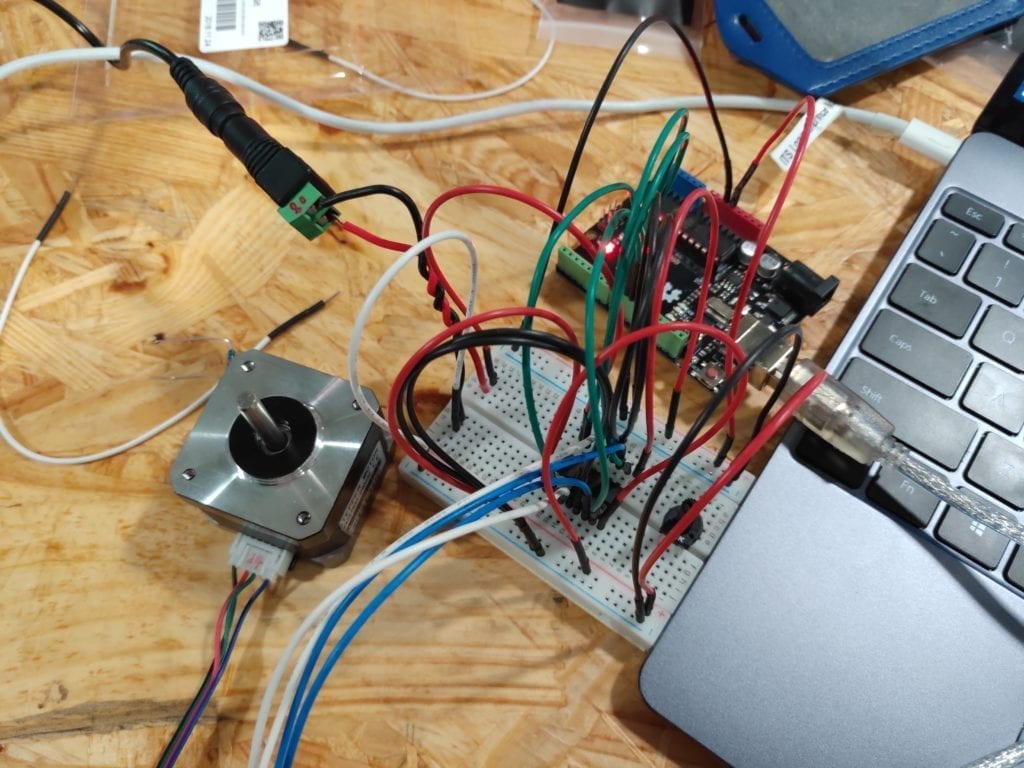Recitation 4:Drawing Machine
In this week’s recitation, we are learning to control the step motor. Moreover, we are combining the step motor with the H-Bridge to create a drawing machine.
Materials:
For Steps 1 and 2
1 * 42STH33-0404AC stepper motor
1 * L293D ic chip
1 * power jack
1 * 12 VDC power supply
1 * Arduino kit and its contents
For Step 3
2 * Laser-cut short arms
2 * Laser-cut long arms
1* Laser-cut motor holder
2 * 3D printed motor coupling
5 * Paper Fasteners
1 * Pen that fits the laser-cut mechanisms
Paper
Step 1: Hooking up the step motor:
The first step is to hook up the step motor. Since the step motor is controlled by the H-Bridge, the wiring is a bit complicated. One thing especially needs to pay attention is the direction of the H-Bridge. I need to make sure the semi-circle gap aligns with the picture in the diagram. Another important point is to separate the 12V and 5V power so that the Arduino doesn’t get burned. After hooking up the wire, we are using the sample code to make the motor turn a full circle.
Here is the circuit and the test video:

Step 2: Control the step motor with a potentiometer
Similar in the way of controlling a fan with a potentiometer, I connected the third pin to an ANALOG IN pin to read data from the potentiometer. Then I map the input to a value in the range of (0,200) to the output pin that is connected to the H-Bridge.
Here is the test video:
Step3: Building the Drawing Machine
With both my and my teammate’s step motor running, we put them together and assembled the mechanical arms. Boom! A drawing machine comes to work!
And our final painting!
Question 1:
I am interested in creating an interactive game. For example, a labyrinth controlled by a joystick. The users can tilt the labyrinth to roll a ball from the start point to the finish point.
The idea of using digital devices to create art is an interesting idea. It looks or sounds cool. But to create an exquisite piece of art requires a high level of controlling the movement of the digital parts. In our case, though the step motors work well, yet it is difficult to control such a machine.
Question 2:
I like the wooden mirror creation. This project is not very difficult to realize, yet creates a strong sense of aesthetic joy. The actuator used is the servo. Using the servo to flip the wooden block is easily controllable. And it provides an expected output. While in our project, though the step motor works fine, yet controlling it proves to be a difficulty.